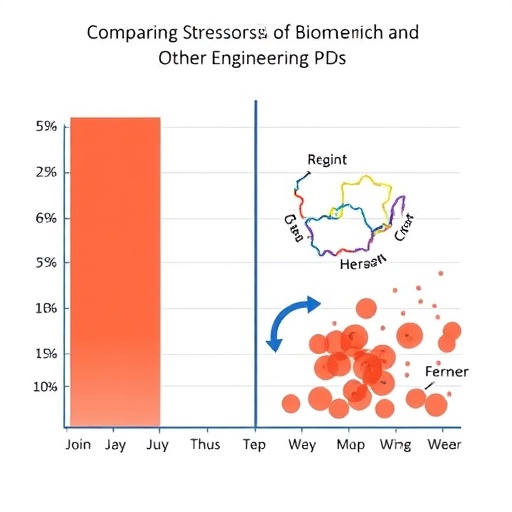
Earthâs Oxygen Story Rewritten: A Two-Billion-Year Transition Reshaping Our Planetâs History
For decades, scientists have understood that Earthâs atmosphere experienced dramatic changes in oxygen content through its deep history, evolving from an oxygen-poor environment billions of years ago to the oxygen-rich air we breathe today. Yet, the fine details of this transformationâthe timing, rates, and feedback mechanismsâhave remained elusive. New research by Wang, Li, Peng, and colleagues, published in Nature, unveils a high-resolution record of Earthâs oxygenation spanning 2.5 billion years, shedding light on a prolonged, complex transition rather than a simple step-function rise. This work marks a major advance in unraveling how Earthâs atmosphere and oceans co-evolved with life in shaping modern habitability.
Oxygen is the breath of life for complex organisms today, but Earthâs early atmosphere paradoxically began almost devoid of free oxygen. The Great Oxidation Event (GOE), occurring around 2.4 billion years ago, has long been regarded as the defining moment when oxygen began accumulating in the atmosphere. However, this landmark event did not spell a swift path to modern oxygen levels. Instead, the new findings reveal a protracted and oscillatory process in which oxygen levels remained relatively low and unstable for nearly two billion years before finally stabilizing near contemporary levels around 400 million years ago.
This nuanced oxygenation history was reconstructed using isotopic analyses of sedimentary sulfate, specifically mass-independent fractionations of oxygen isotopes captured as Îâ²^17O in sulfate minerals. Because sulfateâs oxygen isotopes are intricately linked to atmospheric oxygen partial pressure (pOâ), their record acts as a time capsule for tracing Earthâs atmospheric oxygen through geological epochs. By combining this proxy with iron and sulfur isotopic data, the team could pinpoint large-scale trends and transient perturbations in atmospheric oxygen over billions of years.
One of the most striking revelations is the extended interval of low, fluctuating oxygen concentrations punctuating the mid-Proterozoic Era (approximately 1.8 to 0.8 billion years ago). During this time, pOâ did not approach modern atmospheric levels but hovered in a regime sufficient to sustain microbial life, yet far below what complex multicellular organisms demand. This unstable oxygen environment may have imposed significant limitations on biological innovation and complexity during Earthâs so-called “Boring Billion.”
The data also underscore a compelling linkage between major isotopic excursions in marine carbonates and simultaneous shifts in oxygen and sulfur isotopic compositions. For instance, the Neoproterozoic Era, spanning roughly 1 billion to 541 million years ago, features episodic negative δ^13C excursionsâcarbon isotope anomalies historically associated with environmental upheavals. The new study documents corresponding declines in Îâ²^17O of sulfate and δ^34S, pointing towards episodes of elevated atmospheric oxygen influx that transiently oxidized marine organic matter and reduced sulfur compounds. These processes, in turn, sparked negative feedback loops wherein oxygen drawdowns followed each spike, preventing a runaway oxygenation.
By integrating these multi-proxy isotope records with quantitative biogeochemical models, the researchers elucidated how atmospheric oxygen underwent a two-billion-year transitional phase characterized by positive couplings on long timescales and negative feedbacks on shorter scales. This interplay governed not only oxygenâs steady accumulation but also the dynamic oxygenation states of the oceans, which are critical for shaping marine redox landscapes and ecological niches.
The eventual stabilization of oxygen near modern levels after about 410 million years ago coincides with the late Paleozoic Era, a period linked to the diversification of land plants, complex animal life, and profound climatic shifts. The findings support the notion that sustained oxygenation of the atmosphere and oceans was a prerequisite for the flourishing of complex multicellularity and large-bodied animals.
Moreover, this progressive oxygenation narrative helps explain several enigmatic paleogeochemical records. The anomalous carbon cycles of the Neoproterozoic and early Paleozoic, characterized by large and recurring carbon isotope excursions, align with the dynamic oxygen conditions inferred here. These geochemical signatures, long debated, receive a coherent interpretation within a framework recognizing long-term biogeochemical feedbacks driven by evolving atmospheric and oceanic oxygen levels.
The study also reframes our understanding of Earthâs sulfur cycle, intimately linked to oxygen availability. Mass-independent fractionations of sulfur isotopes provide snapshots of ancient atmospheric chemistry. The 2.5 billion-year record now documents how sulfurâs isotopic signals map to transitions in atmospheric oxygen, enabling refined reconstructions of global oxidative weathering, microbial sulfur metabolism, and ocean-atmosphere exchanges.
Importantly, this research emphasizes that Earthâs oxygenation was not a singular event, but a complex, drawn-out evolutionary trajectory influenced by interactions among biological innovation, geochemical cycles, and tectonic processes. The two-billion-year oxygen transition reveals a planet continually balancing oxygen production and consumption through shifting environmental and biological landscapes.
From an astrobiological perspective, these insights deepen our knowledge about planetary habitability evolution. Understanding how Earthâs atmosphere stabilized oxygen over geological timescales informs the search for life on exoplanets. The findings demonstrate that oxygenic atmospheres may arise gradually with episodic phases of instability, reinforcing the importance of biosphere-geosphere feedbacks.
Overall, Wang et al.âs groundbreaking work significantly shifts paradigm by providing a continuous isotopic chronicle of Earthâs atmospheric oxygen dynamics. Their multi-million-year resolution distinguishes subtle changes missed by previous snapshot studies, positioning this research as a landmark contribution to Earth history.
Future research building on these results will aim to further dissect spatial variability in atmospheric and oceanic redox states, explore mechanistic controls on feedback intensity, and extend proxies to other critical elements modulated by oxygen. Such efforts promise to refine our picture of how Earth transformed from an anaerobic world into one teeming with oxygen-fueled diversity.
In sum, Earthâs oxygen revolution was neither rapid nor linear; rather, it was a measured transition featuring complex biochemical exchanges and geochemical feedbacks over an immense span. This prolonged oxygen dance shaped the trajectory of life, climate, and the habitability of our blue planet, underscoring the profound interconnectedness between life and Earthâs evolving environment.
Subject of Research: Earthâs atmospheric oxygenation history using mass-independent oxygen isotopes in sedimentary sulfate and sulfur isotope data to trace pOâ over 2.5 billion years.
Article Title: Two-billion-year transitional oxygenation of the Earthâs surface
Article References:
Wang, H., Li, C., Peng, Y. et al. Two-billion-year transitional oxygenation of the Earthâs surface. Nature (2025). https://doi.org/10.1038/s41586-025-09471-4
Image Credits: AI Generated
Tags: ancient Earth atmosphere changesancient oceans and atmosphere interactionsbiological impacts of oxygen levelsco-evolution of life and oxygencomplex atmospheric transitionsEarth’s habitability over timeEarth’s oxygenation historyGreat Oxidation Eventhigh-resolution geological recordslong-term oxygen fluctuationsoxygen depletion and accumulation phasesoxygen-rich atmosphere evolution



